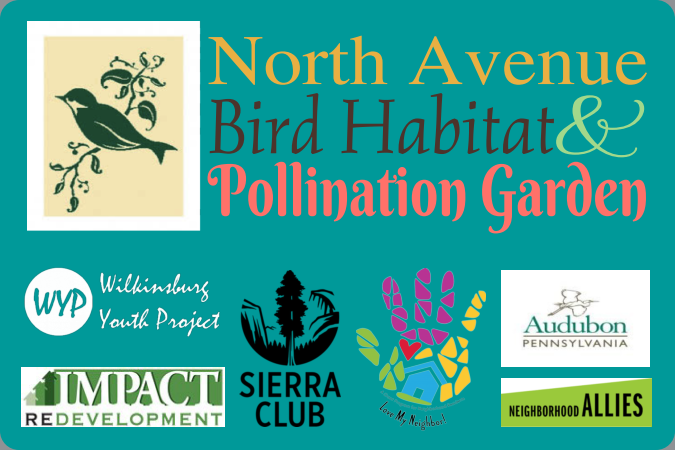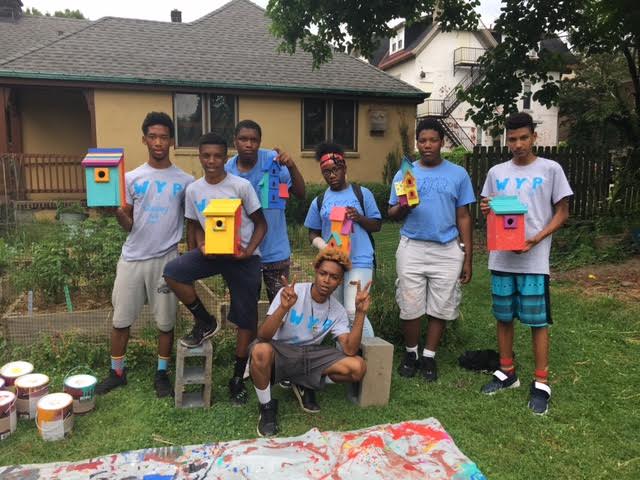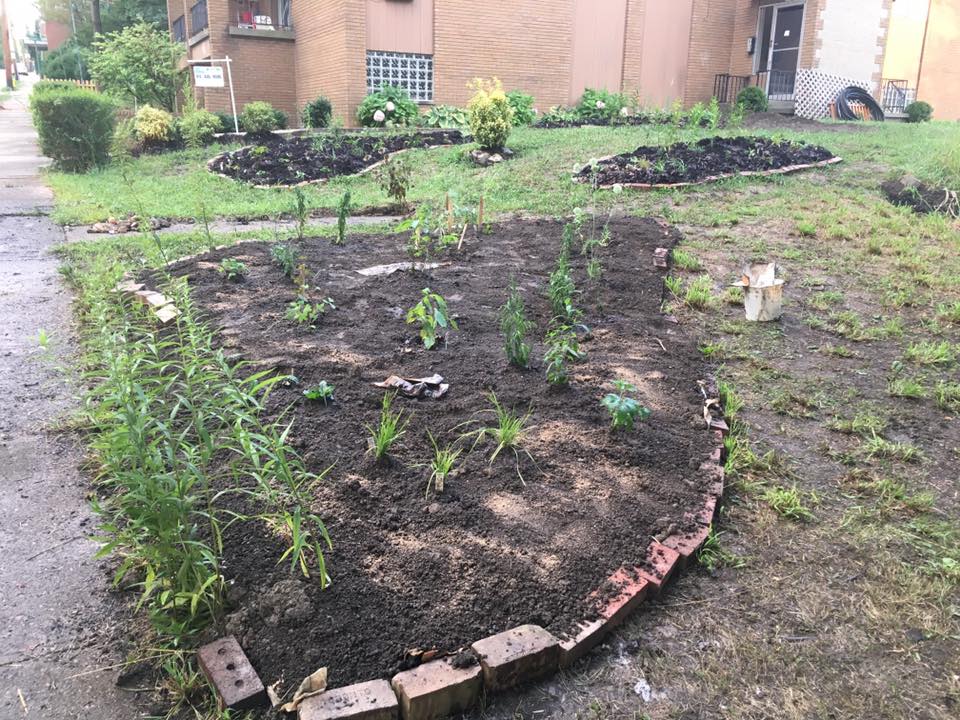This is one in a series of articles about projects supported by 2018 Huplits wildlife grants. The annual grants are awarded and administered by the Sierra Club Allegheny Group with funding provided by the Huplits Foundation.
The Wilkinsburg Pollinator Gardens project started when apartment building owner Jerry Gaudi decided to turn a North Avenue vacant lot and illegal tire dump next to his building into something different. With help from community members, and cleared of tires by the borough, the lot transformation to green space began in 2016.

In 2017 the Sierra Club Allegheny Group got involved and provided a Huplits grant that helped with the purchase of soil and other supplies. Plants were donated by many volunteers as well as local native plant nurseries, and lots of volunteer labor was provided by Sierra Club and other community members. These resources enabled new flower beds to be added as well as bird houses and a gazebo, with more additions planned for the future.
Wilkinsburg is a borough in Allegheny County adjacent to the city of Pittsburgh. Its current population is about 15,500 -- a majority of residents are African American. There are significant levels of poverty and the borough has demolished many vacant, uninhabitable houses built in the early 1900’s, resulting in a large number of vacant lots.
Jerry reports that says what was once a vacant lot and illegal dump site, is now a welcoming green space that has hosted community gatherings, and is visited by children from a nearby daycare and by classes from an elementary school down the block.
The North Avenue project has proven to be a catalyst. A borough plan adopted in 2011 prioritized green space as an appropriate use for vacant lots. Three more projects are in the works, led by community members who first got involved on North Avenue.

Lynette Bloedow is leading a project on an empty lot next to Covenant Fellowship Church. The corner property on Swissvale Avenue has a bus stop and is close to the main street of the borough. Fruit trees were planted in spring of 2017, and pollinator gardens are being built this year, plus an area for medicinal plants.
Another project is unfolding in a vacant lot a block further south on Swissvale Avenue across from a new Family Dollar store, led by Kate Luxemburg. The plan includes lots of flowers to attract pollinators, and Kate plans to invite a beekeeper. The lot will also feature sunflowers which are able to remove lead and other heavy metals from soil.
Nicole Santella is leading the restoration of a historic home and lot into a community education and meeting space with pollinator gardens, amphibian habitat, and storm water reclamation zones. The grounds will provide a living classroom about urban agriculture and environmental awareness.
A 2018 Huplits grant is helping to continue work on these projects, plan additional ones, fund signage and conduct education events.
New alliances have been formed. Jerry notes that nothing was invented -- the organizations that collaborated were already there, they just needed to connect. A core group of organizers and volunteers share a Facebook page and keep in touch regularly via an email list. Gabi Hughes, Environmental Educator at the Audubon Society of Western Pennsylvania, helped by identifying birds native to the area, as well as the plants and shrubs that will help attract and feed them. Other organizations contributing time, money, expertise, materials and labor include Wilkinsburg Youth Project, Impact Redevelopment, Neighborhood Allies and Sierra Club Allegheny Group.
The Wilkinsburg garden projects primarily feature native plant species. Birds require lots of insect protein, especially during nesting season, and native plants support many more insects than non-native ornamental species. Ironically, non-native plants became popular in the U.S. precisely because they were not chewed on by insects. Most of the plants available in big-box store nurseries today are not recognized as food by our native plant-eating insects. In addition to seeking out native plants for your own garden, be sure to specify that you want plants that have not been treated with pesticides or chemical fertilizers.

Bees and butterflies require pollen and nectar from early spring through late fall, so pollinator gardens need to include plant species that provide a continuous supply of blooms. Although honey bees are often thought of as nature’s primary pollinators, bees native to the U.S. (honey bees were introduced by European colonists) are even more efficient pollinators. Many native bee species live in the ground, so it is also important for pollinator gardens to include areas of bare soil that are not covered in mulch, and are not walked on.
We will revisit Wilkinsburg next spring to see how the gardens and pollinators are doing.
This article was included as part of the 2019 Winter Sylvanian newsletter. Please click here to check out more articles from this edition!